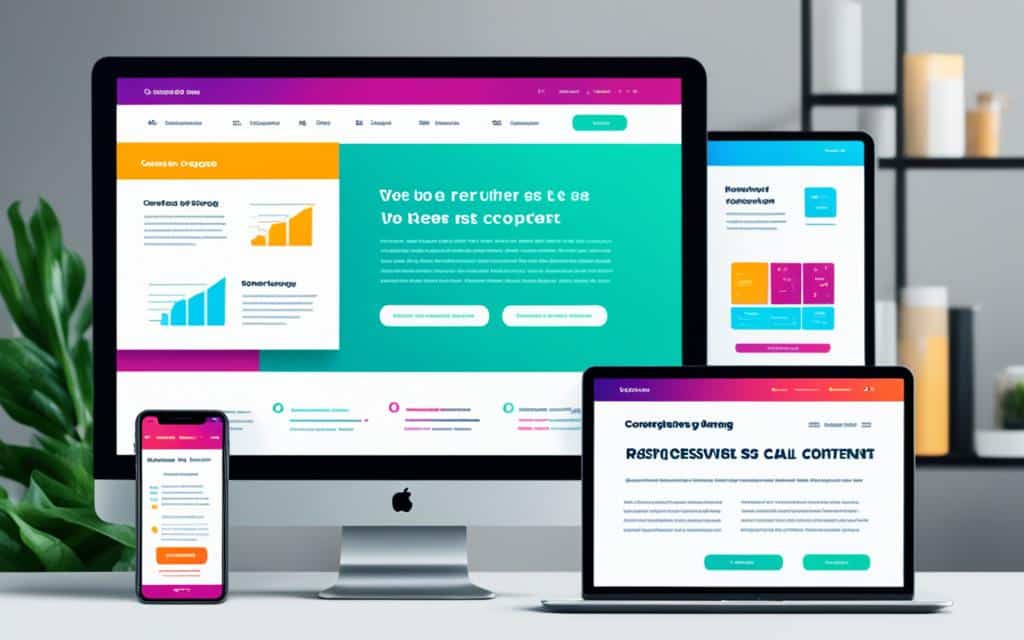Table of Contents
Landing pages are web pages designed to capture leads and generate sales. When creating landing pages within a content management system (CMS) like WordPress, Shopify, or Squarespace, it’s important to choose a CMS that fits your goals and offers the necessary features, customization options, and integrations. Focus on creating clear and compelling headlines, highlighting the benefits of your offer, including a strong call-to-action, and regularly testing and optimizing your landing pages for better performance and conversion rates.
Choosing the right CMS for landing page creation is crucial. Not all CMS platforms are created equal in terms of design capabilities. You need a CMS that offers the flexibility, features, and integrations you require. For example, WordPress has many plugins and themes that can assist in creating landing pages, while Shopify has built-in templates and features specifically for e-commerce landing pages. Consider your goals, such as customization options, form and button additions, conversion tracking, and integration with email marketing or CRM tools when selecting a CMS for landing page design.
The key elements of effective landing pages include attention-grabbing headlines, focusing on the benefits of your offer rather than just features, and providing a strong call-to-action. A clear and compelling headline captures attention and communicates your value proposition. Instead of listing features, focus on the real value your offer brings to potential customers. Use bullet points, subheadings, and images to highlight the main benefits and differentiate yourself from competitors. Finally, include a clear and strong call-to-action that tells visitors what they need to do and what they will get in return.
Creating landing pages within CMS platforms is an ongoing process of testing and optimization. Utilize tools like Google Analytics, Google Optimize, or Unbounce to measure and compare different versions of your landing pages. Test different elements such as headlines, images, copy, layout, and call-to-action. Gather feedback from visitors, customers, or subscribers to identify areas for improvement. Regularly optimizing your landing pages can lead to better performance and higher conversion rates.
To conclude, effective landing page design within CMS platforms is crucial for increasing user engagement and conversion rates. By choosing the right CMS, focusing on key elements like headlines, benefits, and a strong call-to-action, and regularly testing and optimizing your landing pages, you can create high-performing pages that drive results for your marketing campaigns. Stay updated on the latest trends and best practices in CMS landing page design to ensure continuous improvement and success.
Choosing the Right CMS for Landing Page Creation
Not all CMS platforms are created equal when it comes to landing page creation. It’s important to choose a CMS that offers the flexibility, features, and integrations you need. Different CMS platforms cater to different industries and goals, so selecting the right one is crucial for creating impactful landing pages that drive conversions.
WordPress: As one of the most popular CMS platforms, WordPress provides a wide range of plugins and themes that can assist in creating stunning and functional landing pages. With its user-friendly interface and extensive customization options, WordPress allows you to design landing pages tailored to your specific requirements. Whether you’re selling products, generating leads, or promoting events, WordPress offers abundant resources to enhance your landing page design.
Shopify: If you operate an e-commerce business, Shopify may be the ideal CMS platform for your landing page needs. Built specifically for online stores, Shopify offers ready-made templates and features that simplify the process of creating high-converting e-commerce landing pages. From showcasing products to integrating secure payment gateways, Shopify streamlines the creation of landing pages designed to drive sales and optimize customer experiences.
When selecting a CMS for landing page design, consider the following factors:
- Customization options: Evaluate the level of customization each CMS offers. This includes the ability to customize layouts, colours, fonts, and other visual elements to align with your brand identity.
- Form and button additions: Assess the CMS’s ability to incorporate forms and buttons seamlessly into your landing pages, allowing you to capture valuable information and encourage user engagement.
- Conversion tracking: Look for CMS platforms that provide robust conversion tracking capabilities. This feature allows you to monitor the performance of your landing pages and make data-driven optimizations to improve conversions.
- Integration options: Consider the CMS’s compatibility with other essential tools such as email marketing or CRM software. Seamless integration facilitates the automation of lead nurturing, customer relationship management, and other marketing campaigns.
By carefully evaluating these factors, you can choose a CMS platform that empowers you to create highly effective and visually appealing landing pages tailored to your specific goals.
| CMS Platform | Customization Options | Form and Button Additions | Conversion Tracking | Integration Options |
|---|---|---|---|---|
| WordPress | Extensive customization options with plugins and themes | Ability to add forms and buttons using plugins | Various tracking plugins and tools | Integration with popular email marketing and CRM platforms |
| Shopify | Customization options tailored to e-commerce needs | Built-in form and button features | In-built conversion tracking | Seamless integration with popular e-commerce and marketing tools |
Key Elements of Effective Landing Pages
To create effective landing pages, it’s essential to focus on key elements that grab attention and drive conversions. By incorporating compelling headlines, highlighting the benefits of your offer, and providing a clear and strong call-to-action, you can increase engagement and encourage visitors to take action. Let’s explore these elements in detail:
1. Compelling Headlines
Start your landing page with a clear and attention-grabbing headline that immediately communicates your value proposition. A compelling headline sets the tone for the rest of the page and hooks visitors, sparking their interest and making them want to learn more. Use words and phrases that evoke emotion and resonate with your target audience.
2. Benefits over Features
Instead of simply listing the features of your product or service, focus on highlighting the benefits it provides to the user. Explain how your offer can solve their pain points, make their lives easier, or improve their quality of life. By focusing on the benefits, you show visitors the value they will gain by converting, making it more likely for them to take action.
3. Use Visuals to Enhance Messaging
Visual elements such as images, videos, and infographics can help bring your landing page to life and reinforce your messaging. Use visuals strategically to highlight the main benefits of your offer, differentiate yourself from competitors, and create a visually engaging experience for your visitors. Ensure that the visuals are relevant to your message and enhance the overall design of the page.
4. Clear and Strong Call-to-Action
A well-crafted call-to-action (CTA) is essential for guiding visitors towards the desired action. Make your CTA clear and prominent, using persuasive language that tells visitors exactly what they need to do and what they will gain by taking action. Use contrasting colors, bold fonts, or button design to make the CTA stand out and draw attention.
| Best Practices: | Mistakes to Avoid: |
|---|---|
|
|
By incorporating these key elements into your landing pages, you can create a persuasive and conversion-focused experience for your visitors. Remember to test and optimize your landing pages regularly to ensure maximum performance and effectiveness.
Testing and Optimizing Landing Pages
Creating landing pages with CMS platforms is an ongoing process of testing and optimization. To ensure your landing pages are performing at their best and driving conversions, it’s crucial to regularly test and optimize them. Utilizing tools like Google Analytics, Google Optimize, or Unbounce can provide valuable insights and metrics to guide your optimization efforts.
When testing your landing pages, focus on experimenting with different elements that can impact user behavior and conversion rates. These elements include headlines, images, copy, layout, and call-to-action buttons. By testing different variations of these elements, you can identify what resonates most with your audience and improves their engagement with your landing pages.
Collecting feedback from your visitors, customers, or subscribers is also essential for identifying areas of improvement. Consider implementing surveys or feedback forms on your landing pages to gather insights directly from your audience. Their feedback can help you understand what elements are working well and highlight any pain points or areas that require optimization.
Regularly optimizing your landing pages based on testing results and feedback can lead to better performance and higher conversion rates. By analyzing the data and making data-driven decisions, you can continuously improve the effectiveness of your landing pages and maximize their impact on your marketing efforts.
| Testing Element | Tested Variations | Impact on Conversion Rates |
|---|---|---|
| Headline | Variant A: Question-based headline Variant B: Benefit-focused headline Variant C: Urgency-driven headline |
Variant C resulted in a 20% increase in conversion rates compared to the control. |
| Images | Variant A: Product image Variant B: Lifestyle image Variant C: Infographic |
Variant B showed a 15% increase in engagement and conversion rates compared to the control. |
| Copy | Variant A: Short and concise copy Variant B: Detailed and informative copy Variant C: Storytelling approach |
Variant C resulted in a 25% increase in conversion rates and a higher average time on page. |
| Layout | Variant A: Single-column layout Variant B: Two-column layout |
No substantial difference in conversion rates between the two variations. |
| Call-to-action | Variant A: “Sign up now” Variant B: “Get started today” Variant C: “Claim your free trial” |
Variant C outperformed other variations with a 30% increase in conversion rates. |
Conclusion
Designing effective landing pages within CMS platforms is crucial for increasing user engagement and driving conversion rates. By carefully selecting the right CMS that offers the necessary customization options and integrations, you can create landing pages that align with your goals and meet your specific requirements.
Key elements such as attention-grabbing headlines, compelling benefits, and strong call-to-action play a significant role in optimizing the performance of your landing pages. By focusing on these elements and presenting your offer in a clear and persuasive manner, you can capture the interest of your target audience and encourage them to take the desired action.
Regularly testing and optimizing your landing pages is essential for continuous improvement. Utilize tools like Google Analytics or Google Optimize to measure the effectiveness of different page versions, and gather feedback from your visitors to identify areas for enhancement. By iterating on your designs and implementing changes based on data-driven insights, you can refine your landing pages and achieve higher conversion rates.
Staying informed about the latest trends and best practices in CMS landing page design is crucial for staying ahead of the competition. As technology and user preferences evolve, it’s important to adapt your strategies accordingly. By keeping up with industry updates and exploring innovative design techniques, you can ensure that your landing pages remain effective and deliver optimal results for your marketing campaigns.
FAQ
What are landing pages?
Landing pages are web pages designed to capture leads and generate sales.
What is a CMS?
CMS stands for Content Management System, and it is a platform used to create and manage digital content.
Why is it important to choose the right CMS for landing page creation?
It’s important to choose a CMS that fits your goals and offers the necessary features, customization options, and integrations.
Which CMS platforms are suitable for creating landing pages?
Popular CMS platforms for landing page creation include WordPress, Shopify, and Squarespace.
How do I choose the right CMS for landing page design?
Consider your goals, such as customization options, form and button additions, conversion tracking, and integration with email marketing or CRM tools when selecting a CMS for landing page design.
What are the key elements of effective landing pages?
The key elements of effective landing pages include clear and compelling headlines, highlighting the benefits of your offer, and including a strong call-to-action.
What should I focus on when creating a landing page headline?
Start with a clear and compelling headline that captures attention and communicates your value proposition.
What should I highlight in my landing page to differentiate myself from competitors?
Use bullet points, subheadings, and images to highlight the main benefits and differentiate yourself from competitors.
Why is it important to include a strong call-to-action in a landing page?
A clear and strong call-to-action tells visitors what they need to do and what they will get in return.
How can I test and optimize my landing pages for better performance?
Utilize tools like Google Analytics, Google Optimize, or Unbounce to measure and compare different versions of your landing pages. Test different elements such as headlines, images, copy, layout, and call-to-action. Gather feedback from visitors, customers, or subscribers to identify areas for improvement.
Why is regular optimization of landing pages important?
Regularly optimizing your landing pages can lead to better performance and higher conversion rates.













